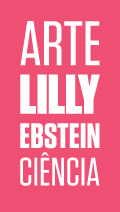Photography Techniques
SCIENTIFIC AND ARTISTIC PHOTOGRAPHY AND PHOTOMICROGRAPHY
-
 Lilly Ebstein | Clique para ver +
Lilly Ebstein | Clique para ver + -
 Lette-Verein | Clique para ver +
Lette-Verein | Clique para ver + -
 Técnicas de ilustração científica | Clique para ver +
Técnicas de ilustração científica | Clique para ver +
Scientific Photography, Radiology Techniques, Photomicrography and Metallography were based on the teaching of Photography Techniques in 1890 at the Lette-Verein School.
The launching of the Photography Techniques course in 1890 at the Lette-Verein School, with a two-year duration, was a bold project for the time and marked the beginning of a new field of work for women. The starting point was the photograph’s artistic aspect, which was considered more appropriate for women, but the field soon expanded to education in Scientific Photography (Wissenschaftliche Photographie) and in Professional Photography (Fachphotographie).
Scientific Photography could lead to countless roads of professional work, including as assistant in institutes of Medicine, Veterinary or in laboratories. These courses could also include training in Botany and Biology. In 1895, a completely new subject was offered to the photographers, that of Radiology Techniques. The technical assistant at an x ray laboratory would need to know how to take, prepare and develop x rays, produce a macroscopic photograph, make photographic copies and prepare images to be presented in class. The photographer also had to study Chemistry, Physics, Anatomy, Physiology and Radiology in order to pass the photographer state exam.
As of 1905, the Photography course included training in Photomicrography and Metallography. Photomicrography was taught together with other subjects such as Anatomy, Electricity, Parasitology, Histology, Serology, Slicing and Staining Techniques and Microscopy Techniques. At the Lette-Verein, one could only work correctly as a photomicrographer if you had full scientific knowledge of what was being portrayed. Photomicrography was included in the course with the purpose of using it in institutes of Medicine and Natural Sciences or in industry. The introduction of this course changed its organization, which then became divided in three parts; 1- General and Scientific Photography; 2- Reproduction and Touch Ups; and 3- Photomechanical Processes. There were also drawing lessons.
Lilly Ebstein Lowenstein (1897-1966) led a life between science and art, drawing and taking photographs in the fields of Medicine and Zoology. In her work, Lilly combined her technical knowledge of photography and drawing, the study of the sciences and a remarkable talent for aesthetics. She was born in Germany and studied at the Lette-Verein School in Berlin from 1911 to 1914. In 1925, she immigrated with her husband and two children to São Paulo. In 1926, she became an illustrator and photomicrographer at the Illustration and Photography Department at the School of Medicine (USP, as of 1934), which she headed for thirty years after 1932. Lilly collaborated at Instituto Biológico de Defesa Agrícola e Animal (the Biological Institute for the Defense of Agriculture and Animals), from 1930 to 1935, namely in the Avian Pathology Department. A life with art dedicated to the research and dissemination of science.

